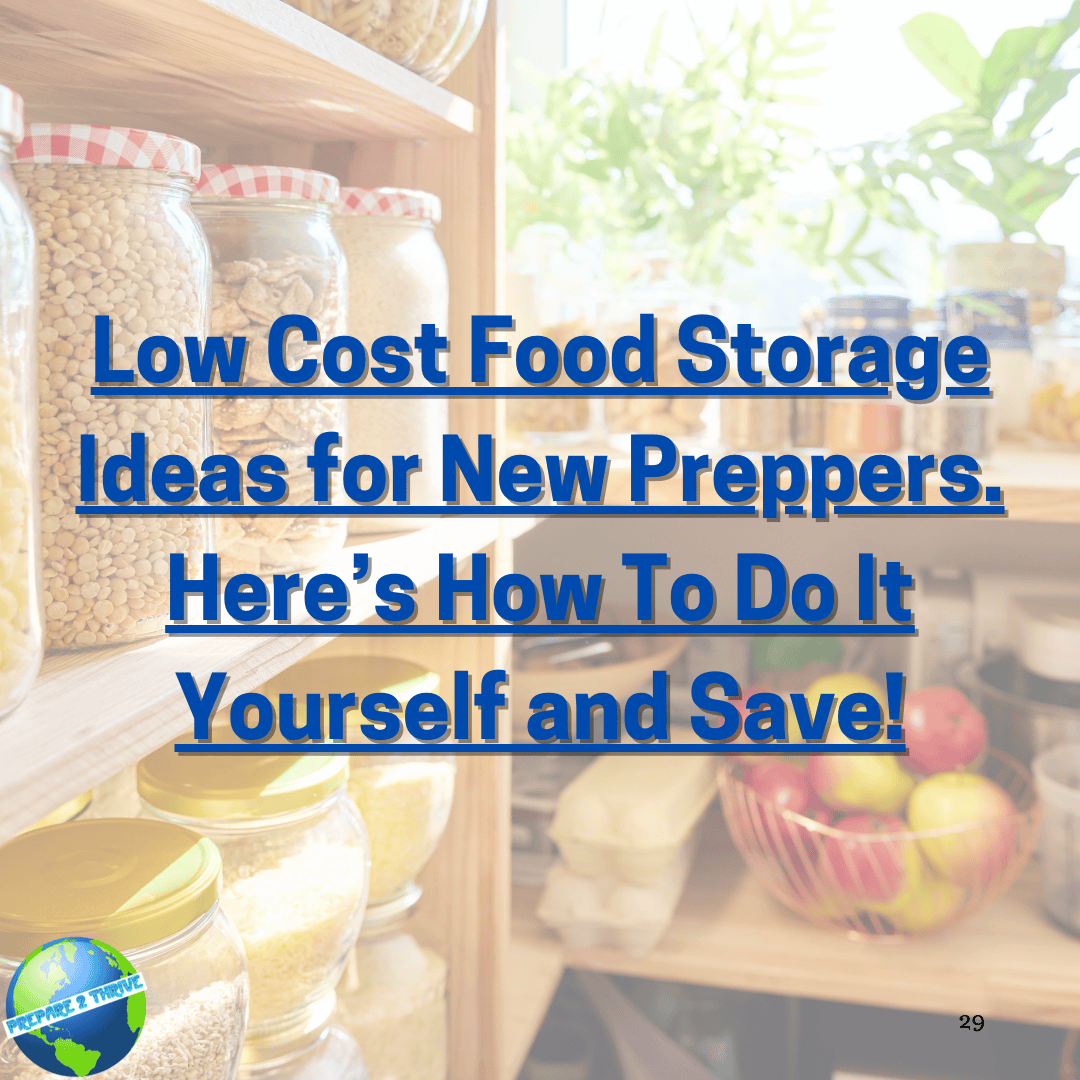Guest article by Ben W
 In today’s economic climate, finances are a major concern for everyone, but doubly so for the prepper or survivalist. Not only are we trying to maintain a semblance of normalcy in our everyday lives, we are also attempting to put together a “kit” for another lifestyle altogether, a kit that will keep us alive when everything falls apart.
In today’s economic climate, finances are a major concern for everyone, but doubly so for the prepper or survivalist. Not only are we trying to maintain a semblance of normalcy in our everyday lives, we are also attempting to put together a “kit” for another lifestyle altogether, a kit that will keep us alive when everything falls apart.
Generally, the first items purchased by a prepper are foodstuffs, and these preps can be made slowly and relatively inexpensively, over a long period of time, or one can bite the bullet and spend a fortune to “prep” quickly, and in today’s socio-economic climate, quickly is the byword.
This usually involves purchasing ready made and assembled food packs from some company offering a 5-gallon survival pail sufficient to feed you for anywhere from 3 weeks to six months, or by buying surplus MRE’s. Both of these are good options, but you are paying for convenience and there is a better and much less expensive option.
Having been a long time prepper, 25+ years, I was into long term food storage at a time when options were few: Foods packaged for campers, very expensive, and MRE’s, always surplus and also fairly expensive.
I took it upon myself to put together my own food pails, stocked with items I and my family would eat, and to this day, many of the stored items appear to be store fresh! Before I go on, I want to assure you that there will be many negative comments on the methods I have been using and which I am proposing. There will be flak about the nutrients being gone & spoilage, among other things. I cannot speak to the nutritive value of the items stored, but I can say they look and taste good, show no signs of spoilage. And this after 20 years in some cases!
I started my food storage program with three and five-gallon food grade buckets which I obtained from a bakery at a local market. These came with lids with a heavy rubber gasket. The buckets were taken home and washed thoroughly with soap and hot water. They were then dried, and the interior surfaces of the bucket, the lid and the sealing gasket were all wiped down with bleach. I then placed an unscented trash bag into the bucket, and I used one of two methods to purge the air/oxygen from the pail:
Method #1,
I dropped a piece of dry ice into the bag and then placed the items I was storing into the bucket.
Most were left in their store packages, some items were repacked, such as bulk beans, rice and flour. These were placed into separate plastic bags and given their own small piece of dry ice. I added items until the pail was full, and then I lightly twisted the outer plastic bag closed. In a few minutes, the bag would swell, indicating that the CO2 being produced by the dry ice was filling the bag. The air/oxygen had been displaced. At this point, I twisted the bag shut tightly, wired it closed and placed the lid on the bucket and locked it down. I did not use any oxygen absorbers or desiccants.
Method #2,
was to set the pail up as indicated, and instead of dry ice, I used nitrogen from a commercial tank to purge the air/oxygen from the bags.
In addition to bulk items, the pails might also contain pasta, commercials mac/cheese, or any number of items packed in cardboard and plastic. A hose ran from the tank to the bottom of the bag, and when the bag swelled the hose was removed and the bag sealed. Once sealed, these pails were labeled and dated and kept, at various times, in my workshop, garage, storage shed, and ultimately, in a cargo container that was “roofed over” for shade. All these environments were fairly stable temp and moisture wise.
To test the efficiency of this system, I opened some of these buckets that had been sealed many years ago. In none of the contents did I find spoilage or weevils, not in the flour, corn meal or other grains. I did have weevils in ALL of the grain products that were stored in sealed buckets that had not been purged. Canned items appeared to be ok, no swelling or rusting, but due to the ages of these items, I am leery of using them and will replace them. I should have been rotating them, but the items were in sealed pails that I was reluctant to open, so it’s my loss.
As they say about the pudding: My grandkids were visiting and wanted mac/cheese and we were out, stores closed. I opened a storage pail and removed two boxes of commercial mac/cheese, it cooked up great and there were no ill effects, none, other than “Any left?” My wife and I have regularly used various cereals from storage, such as wheat & oatmeal and they are good also. The sugars and honey I store will last forever, and I don’t think they lose their nutritional value.
It appears that my storage system works well, but to address the nutrition issue, I also store multivitamins, and while I don’t really see a need for them, it can’t hurt. A quick note on dry beans: I have heard that after a few years of storage they become non-palatable, even after cooking. They stay hard and impossible to chew. The remedy for this is to place the cooked beans in a pressure cooker for a few minutes after cooking to soften them up, and they will be as good as fresh.
As for water, more valuable and necessary than food, I have filters and tablets, but I use a homegrown system for storage. As my wife uses bleach, she gives me the empty plastic bottles. They are filled with water without being washed out, and are stored as is. I have drunk water as old as 20 years….no odor or algae, and while flat, shaking to aerate took care of the problem. This water was from a home well, and was not treated in any way before being stored, and I suppose city water, treated, could be stored the same way. The bleach bottles are stored alongside the food pails, and I have had no issues with the plastic bottles degrading or becoming brittle.
On a final note, I use food grade pails for storing my matches and lighters, lantern mantles, and other items which might be moisture sensitive. A desiccant is added, but the pails are not purged. And for soaps, shampoos, scented candles or other items which “smell,” a food grade bucket is ideal for avoiding contamination via “osmosis.” I store these pails in the same area as my foods, and have found no contamination present.
This article deals with preps that I have made over the years, and most were done “on the cheap,” but they have served me and mine well. And while I realize there are commercial alternatives available for long term storage of food and other items, I find “rolling my own” and saving forty to sixty dollars to be much more fun.

